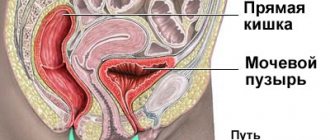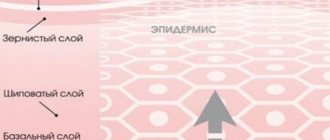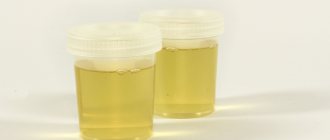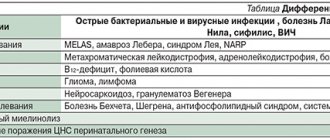Humeral periarthritis (periarthrosis)
is an inflammatory process that occurs in the joint tissues of the shoulder. The manifestation of the pathology is observed in aching pain, which significantly intensifies with movement, as well as tension in the periarticular muscles.
Clinical observations allow us to come to the conclusion that glenohumeral periarthritis occurs more often than other types of pathological processes, which is due to the constant functioning and tension of the shoulder tendon.
Humeroscapular periarthritis - inflammation in the joint tissues of the shoulder
What is glenohumeral periarthritis?
Humeroscapular periarthritis
is a disease localized in close proximity to the shoulder joint. The progression of the pathology leads to changes of a degenerative-dystrophic nature, causing reactive inflammation.
Women over 55 years of age are most at risk of developing pathological processes in the shoulder joint. However, despite this, the disease can also be diagnosed in men.
In practice, right-sided periarthritis is more common, which is explained by increased loads on the limb, but this does not at all exclude the development of other forms of periarthritis of the shoulder.
Classification
Periarthrosis is a collective term that includes several pathologies that differ in location and nature of the lesion:
- Rotator cuff tendonitis is an inflammation of the rotator cuff muscles (supraspinatus, infraspinatus, teres minor, and subscapularis).
- Biceps tendinitis is an inflammation of the biceps tendon.
- The concept of calcific tendinitis is separately distinguished - an inflammatory process in the tendons of the shoulder muscles, occurring with a predominance of proliferation and the formation of multiple calcifications
- Partial or complete rupture of the tendons of the shoulder muscles.
- Retractile capsulitis is a degenerative-dystrophic lesion of the capsule of the shoulder joint.
- Impingement syndrome is a pathological process triggered by pinching of the biceps tendons and rotator cuff muscles between the head of the humerus and the end of the scapula.
Reference!
Doctors often call the collective pathology frozen shoulder syndrome, painful shoulder, cervicobrachial syndrome, and shoulder arthropathy.
The most likely causes of glenohumeral periarthritis
The clinical picture of the disease allows us to identify two most likely causes
, leading to the formation and development of degenerative processes in the shoulder joint:
- Neurodystrophic changes
, progressing in diseases of the musculoskeletal system.
- Shoulder injuries
received in the course of everyday life or professional activities.
Despite the existence of probable causes, there are cases when it is impossible to determine the prerequisites for the pathology.
In addition to probable causes, there are a number of risk factors
, increasing the likelihood of periarthritis of the glenohumeral region. These include:
- age characteristics;
- local or general hypothermia of the body;
- motor dysfunction;
- abnormal skeletal development;
- surgical intervention leading to impaired blood supply to the tissues of the shoulder.
Complications
The most dangerous complication of glenohumeral periarthrosis is adhesive capsulitis, which within 3-4 months can lead to contracture (limited movement or complete immobility). Connective tissue (scar) actively growing in the joint capsule deforms the synovial membrane, involves muscles and ligaments in the scar, reducing the range of motion in the joint (“frozen shoulder symptom”).
The disease is insidious in that even with a full range of therapeutic and rehabilitation measures, movement in the shoulder may not be fully restored.
The most common complication of untreated tendinitis is rupture of degenerative tendons and ligaments, which can lead to permanent dysfunction and even dislocation of the shoulder.
Untreated tendinitis can be complicated by purulent inflammation of the joint capsule (bursitis ). Without surgical intervention (removal of exudate), the tendons and bursa become fused and deformed, which leads to limited range of motion.
The spread of the inflammatory process to a wide tendon strip covering the muscles of the shoulder (aponeurosis) ends with the formation of local or extensive foci of connective tissue replacement, which limits the range of motion in the joint.
Forms of glenohumeral periarthritis
Today it is customary to distinguish three main forms of pathology:
- simple;
- acute;
- chronic.
In a situation where the disease occurs as a result of the consequences of an injury, several days or even a week may pass before the symptoms of glenohumeral periarthritis appear, which is the reason for the formation of prerequisites for the formation of the disease, for which only a small part of patients seek diagnosis.
Another form of glenohumeral periarthritis, which is quite rare, is considered to be algodystrophic “shoulder-hand” syndrome, which is characterized by severe pain, the presence of cold swelling, atrophy of joint tissue and loss of mobility.
The course of the disease, accompanied by the “shoulder-hand” syndrome, is characterized by protractedness and complexity of treatment.
Therapeutic baths
To improve the general condition of joints, ligaments and cartilage, you can perform procedures based on herbal baths. An example of a remedy for periarthritis is hay dust. It’s easy to prepare a bath solution:
- Bring 500 g of hay dust to a boil in 10 liters of water over medium heat.
- Immediately after boiling, the solution is removed from the heat and left for 40 minutes.
- Pour the filtered infusion into a heated bath (37–38 degrees) and take it for 20 minutes.
- Baths with hay dust are recommended to be carried out daily for 7 days.
Symptoms of glenohumeral periarthritis
Numerous studies and practice in treating patients have allowed specialists to identify the main symptoms of glenohumeral periarthritis, taking into account the form of development of pathological processes.
Symptoms of glenohumeral periarthritis in a simple form
- mild pain, concentrated in the shoulder area when performing movements;
- mild limitation of mobility;
- pain when resting at night on the back;
- point tenderness on palpation of the anterior outer surface of the shoulder.
Symptoms of glenohumeral periarthritis in acute form
- sudden, increasing pain;
- expansion of the area of localization of pain from the shoulder to the neck, arm;
- increasing pain during night rest;
- relief when bending the elbow;
- slight swelling.
Symptoms of chronic humeroscapular periarthritis
- moderate pain;
- accompanying movements with discomfort;
- aches and pains during rest;
- periodic pain when performing hand movements.
In the advanced stage of chronic arthritis
also observed:
- density of periarticular tissues;
- loss of joint mobility;
- sharp pain.
Clinical manifestations of shoulder arthropathy
A typical patient with glenohumeral periarthritis has degenerative-dystrophic lesions of the intervertebral discs of the lower cervical vertebrae with narrowing of the intervertebral canal. The clinical picture is determined by the form and stage of the disease.
The simple form of periarthritis is manifested by barely noticeable pain in the shoulder during normal movements (dressing, washing, combing). If the patient prefers to sleep on the affected shoulder, the pain is bothersome at night. Most patients do not indicate the cause and do not remember the onset of the disease; sometimes it is associated with hypothermia or injury.
Acute periarthritis is characterized by acute pain, which can radiate to the neck, outer surface of the shoulder and sharply intensifies with palpation, abduction and extension. Bending is less painful. The pain intensifies sharply at night and is often not relieved by painkillers.
General health suffers; low-grade body temperature, weakness, and malaise are typical. To avoid movements in the shoulder, patients bend the affected limb at the elbow joint and fix it with their healthy arm.
Reference!
As a rule, acute periarthritis is complicated by tendobursitis with the deposition of calcifications in the ligaments and tendons.
Chronic glenohumeral periarthritis occurs with moderate pain and increasing limitation of shoulder mobility, the range of movements decreases gradually. The pain is localized in the area of degenerative-dystrophic changes, sometimes radiates to the neck and is successfully relieved by taking analgesics.
Acute untreated bursitis often takes a chronic course. However, a primarily chronic form of the disease occurs against the background of fibrous bursitis. The final sad result of the chronic course in the absence of treatment is ankylosis (immobility) of the shoulder joint.
Humeral periarthrosis due to tendon rupture in athletes and heavy physical labor workers is manifested by severe pain, hematoma, and a sharp limitation of active movements. In this case, passive movements (with external help) are not limited.
Reference!
Dowborn's symptom - the appearance of pain when extending (raising the arm) by 45-60 degrees and disappearing with further elevation to 120 degrees is characteristic of damage to the tendons of the supraspinatus, infraspinatus and biceps muscles.
Diagnosis of glenohumeral periarthritis
You should seek medical help if symptoms of glenohumeral periarthritis appear, which include pain of varying strength and difficulty in motor function.
Diagnosis of glenohumeral periarthritis is carried out by a general practitioner - therapist
. Based on the results of studying the patient’s medical history and identifying key symptoms, the therapist can give a referral to such specialized specialists (surgeon, neurologist, orthopedist).
To clarify the diagnosis and determine the causes of the disease, diagnostic methods are used such as:
- radiography;
- ultrasound examination (ultrasound);
- MRI diagnostics;
- laboratory type research.
Forecast
The initial stages of periarthritis respond well to conservative treatment. Long-term treatment and temporary transfer to light labor are provided. After complex treatment, joint mobility is completely restored. With a long course of chronic periarthritis, persistent limitation of function, loss of professional activity and disability are possible. If a “locked shoulder” develops, only surgery can partially restore mobility in the joint.
In rotator cuff syndrome, the presence of symptoms for more than three months is associated with a poor prognosis. It worsens with age 55 years and a hooked acromion. Only a third of patients experience complete recovery; 54% remain with clinical signs. To prevent exacerbations of rotator cuff syndrome, patients are advised to avoid stress on the shoulder girdle, excessive tension, and vibration.
Capsulitis is difficult to predict . The pain limits active and passive movements in all directions and frozen shoulder develops. Subsequently, contracture and immobility of the joint develops.
Treatment of glenohumeral periarthritis
Due to the peculiarities of the clinical picture, treatment of glenohumeral periarthritis
is a complex process that requires patience. The first stages of treatment of pathological processes are aimed at removing the load from the diseased joint, which eliminates the possibility of tissue deterioration.
Treatment of glenohumeral periarthritis is a complex and long process
During the treatment process, various methods are used to eliminate symptoms and restore tissue of the damaged joint. Let's look at the most effective of them.
Drug treatment of glenohumeral periarthritis
Relief of pain and elimination of inflammation can be achieved through drug treatment of glenohumeral periarthritis, during which the following groups of drugs are used:
- NSAIDs are non-steroidal anti-inflammatory drugs that help soothe and eliminate pain attacks, relieving muscle lesions;
- painkillers that ease the course of the disease;
- muscle relaxants that reduce muscle tone and relieve spasms;
- chondroprotectors that accelerate regenerative processes.
It is important to note that taking chondroprotectors promotes the restoration of joint tissue, which helps accelerate the process of combating pathological processes. "Artracam" is considered to be the most effective.
.
IMPORTANT! Before taking medications of any group, consultation with a specialist is required.
Physiotherapeutic procedures as a method of treating glenohumeral periarthritis
Physiotherapeutic methods of treatment are a separate area of treatment for degenerative diseases. Today the following treatment methods are used:
- electrical stimulation;
- laser exposure;
- phonophoresis;
- shock wave therapy;
- magnetic therapy;
- acupuncture;
- manual therapy.
Each method has its own advantages and disadvantages. Recommended procedures are determined by the attending physician, in accordance with the individual characteristics of the disease.
Physical therapy (physical therapy) for glenohumeral periarthritis
Physiotherapy
is one of the necessary conditions for complex treatment of the disease and a speedy recovery of the patient. It is recommended to perform therapeutic exercises under the strict supervision of the attending physician.
All therapeutic complexes for glenohumeral periarthritis contain swimming, which is due to a number of useful properties, including the ability to relieve excess tension.
The main goals of using a set of gymnastic exercises are:
- improving blood flow to affected tissues;
- getting rid of congestion;
- strengthening the muscle frame;
- normalization of metabolic processes.
It is important that performing exercises is not permissible during the acute stage of development of the pathology.
Surgery
In situations where conservative treatment methods do not produce adequate results, radical ones are used, in particular surgery.
Surgery is advisable in the following situations:
- violation of tissue integrity;
- cuff damage;
- inflammation of nerve endings;
- the occurrence of tunnel syndrome.
It is important to note that surgery requires certain conditions. Contraindications to surgery may include:
- persistent limitation of motor function;
- the presence of purulent inflammation;
- intolerance to anesthesia;
- refusal to intervene.
The operation is carried out either by an open method or using specialized equipment.
Effect of drugs during treatment
To relieve the inflammatory process and painful syndrome, the patient may be prescribed the following medications:
1. Non-steroidal anti-inflammatory drugs. This refers to taking ketorol, nimesil, dikloberl, etc. Thanks to the effects of these drugs, pain is eliminated and inflammation is relieved from the affected muscles.
2. Painkillers (baralgin, analgin).
3. Muscle relaxants (mydocalm). This is a group of medications that relax muscles and help relieve spasms by reducing muscle tone.
4. Chondroprotectors (structum). Thanks to such drugs, the physiological activity of the joints improves, intra-articular fluid decreases, and swelling is eliminated. As a result, the pain disappears and there is a therapeutic effect.
If the pain is not relieved by the above medications, the patient may be prescribed a subscapular nerve block. The injection is given into the subacromial space. The blockade will be carried out twice throughout the entire treatment period. At least three weeks must pass between the first and second blockade.
Before agreeing to the blockade, you should consult with an experienced doctor about contraindications and side effects.
For glenohumeral periarthritis, a novocaine blockade can be administered. After administration of the drug, you can observe the manifestation of immediate results. In most cases, novocaine is combined with a glucocorticoid. Thanks to this, the inflammatory process is reduced, pain is eliminated, and swelling is relieved. It must be taken into account that the use of hormonal drugs can negatively affect the patient’s immune system. This means that such medications must be used strictly as prescribed by a doctor and under his close supervision.
Preventive measures for glenohumeral periarthritis
Preventive measures help minimize the risks of pathological processes in the tissues of the shoulder joint. Among the most effective among them are:
- limiting loads on the joint;
- timely treatment of infectious and inflammatory processes and disorders of the musculoskeletal system;
- eliminating the possibility of hypothermia;
- systematic performance of specialized gymnastic exercises;
- planning a diet enriched with vitamins and minerals necessary for recovery;
- improving posture, regardless of the type of activity.
Causes
In rheumatological and traumatological practice, it is periarthritis that becomes the most common cause of inflammation in the soft tissues of the shoulder girdle. It is diagnosed in every tenth patient who consults a doctor with complaints of muscle or joint pain. While the causes of periarthritis have long been discovered and classified, the pathogenesis has not yet been well studied. It is assumed that the impetus for inflammatory tissue damage is neurodystrophic changes in tendon fibers. The provoking factor in this case is one of the diseases of the cervical spine:
- osteochondrosis;
- spondylosis;
- displacement of intervertebral joints.
The pathological condition provokes pinching of the nerve fibers of the brachial plexus and circulatory disorders. A reflex spasm of blood vessels, dystrophic changes, and reactive aseptic inflammation of the tendon are also observed.
There is an opinion that the cause of the development of periarthritis is mechanical injuries to soft tissues that occur during extreme physical exertion or frequent monotonous movements. Inflammation can be caused by a fall with emphasis on an outstretched arm, a strong blow, a bruise, or prolonged compression. With micro- and macrotrauma, the integrity of the tendon fibers is disrupted, and the situation is aggravated by hemorrhage, rupture of the rotator cuff, swelling of the periarticular tissues, and disorders of the blood supply to the shoulder joint with oxygen and nutrients.
Periarthritis is often detected in patients with congenital features of the anatomical structure of the shoulder joint:
- weakness of the muscles that rotate the limb;
- violations of the alignment of the head of the bone.
The impetus for the development of the inflammatory process can be metabolic, neurotrophic, immune disorders, cerebrovascular accidents, and arthritis of the shoulder joint. Periarthritis is diagnosed after a myocardial infarction, with tuberculosis of the lungs, pathologies of the gastrointestinal tract, and numerous other diseases of the internal organs. Arthrosis of the shoulder joint is also identified as a prerequisite for the occurrence of periarthritis. ,
knee, hip, ankle joints.










